Rough Gem Cutting Services: A Complete Overview


Intro
Rough gem cutting services are essential to the transformation of a simple stone into an elegant gemstone cherished by collectors, jewelers, and enthusiasts alike. Understanding this service not only illuminates the craftsmanship behind each piece of jewelry but also highlights the intricate processes that elevate these stones from obscurity to artistry. This guide aims to traverse this fascinating terrain, detailing the nuances of rough gem cutting and its far-reaching implications within the gemstone industry.
Gemstone Overview
Definition and characteristics
Gemstones, often hailed as nature's artwork, are minerals that have been meticulously cut and polished for ornamentation and adornment. They typically exhibit remarkable beauty, durability, and rarity—all crucial factors that contribute to their desirability. Gemstones can range from widely recognized diamonds and sapphires to more obscure specimens like alexandrite and painite. The charm of these stones is often attributed to their aesthetic appeal, color, and translucency, which captivate onlookers and give rise to a demand that drives the gem market.
Classification of gemstones
When it comes to classifying gemstones, one can take a rather detailed approach. Primarily, gemstones can be categorized into two main groups: precious and semi-precious. Here’s a closer look:
- Precious gemstones: This group includes the likes of diamonds, emeralds, rubies, and sapphires. These stones are regarded as exceptional due to their exquisite beauty, rarity, and historical significance.
- Semi-precious gemstones: These typically include a broader range of minerals, such as amethyst, citrine, and garnet. While lesser-known, many semiprecious stones have striking characteristics and can hold significant value.
Properties of Gemstones
Physical properties
Each gemstone carries a set of physical properties that define its identity. Key aspects include:
- Hardness: Measured by the Mohs scale, it ranks minerals from 1 (softest) to 10 (hardest).
- Color: The visual appearance of a gemstone, which can vary based on impurities and inclusions.
- Luster: This refers to how light interacts with the surface of the stone, contributing to its overall shine.
Chemical properties
Deepening one’s understanding of the chemical properties of gemstones unveils the underlying composition that gives rise to their characteristic features. For example, the presence of chromium in emeralds contributes to their signature green hue. Other properties worth mentioning include:
- Crystal structure: Refers to the arrangement of atoms within the mineral, which can affect how the stone is cut and polished.
- Refractive index: This measurement indicates how light bends when entering the gemstone, influencing its brilliance and fire.
"Every gem tells a story, not only in its beauty but also in the journey it takes from rough stone to radiant masterpiece."
Culmination
In exploring the world of rough gem cutting services, one unravels a complex tapestry woven with art and science. The nature of gemstones, combined with the skillful hands that shape them, leads to a product that holds both intrinsic and extrinsic value. This intersection of craftsmanship, ethics, and heritage informs not just the finished product but also the larger narrative of the gemstone industry, beckoning collectors and enthusiasts to appreciate the subtleties beneath the surface.
The Art of Rough Gem Cutting
When diving into the world of gems, it’s essential to grasp the ancient craft of rough gem cutting. This art isn’t merely about shaping stones; it’s about bringing out their inner beauty, crafting pieces that tell stories, and creating objects that hold intrinsic value. Gem cutting, at its core, is a blend of science and artistry, merging precision with creativity.
Understanding Gemstone Types
Not all gemstones are created equal. They come in various types, each with unique characteristics and challenges. For instance, diamonds, with their hardness and brilliance, require precise cutting angles to reflect light efficiently. On the other hand, softer gems like opals demand a gentler touch, as they can easily be damaged during the cutting process.
Understanding the specifics is crucial:
- Diamonds: Known for their sparkle, they are cut to maximize light reflection.
- Sapphires: Their rich colors require careful attention to cut to show off their hues beautifully.
- Emeralds: Prized for their green color yet more brittle, they need specialized techniques to prevent breakage.
Each type demands a distinct approach, with cutters needing to adapt their techniques. This knowledge not only enhances the aesthetic but also affects market value.
Historical Context of Gem Cutting
The journey of gem cutting is as rich as the gems themselves. It traces back to ancient civilizations. The Egyptians, for instance, were amongst the pioneers, crafting jewelry from lapis lazuli and turquoise. As cultures evolved, so did the techniques.
In the Renaissance, gem cutting experienced a renaissance of its own. Artisans began creating more intricate cuts. The advent of the table cut in the 16th century allowed for better light refraction. These historical milestones shaped modern practices. Today, technologies such as laser cutting revolutionize the field. Yet, the essence of this art remains grounded in those traditional methods.
"Understanding the history of gem cutting helps appreciate the artistry and techniques involved today."
Knowledge about past cutting styles not only informs current practices but also serves as inspiration for modern jewelers who wish to blend tradition with contemporary aesthetics. Knowing this history grants enthusiasts a deeper connection to the stones they adore, enhancing their overall appreciation.
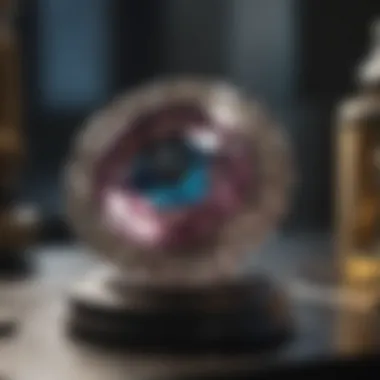
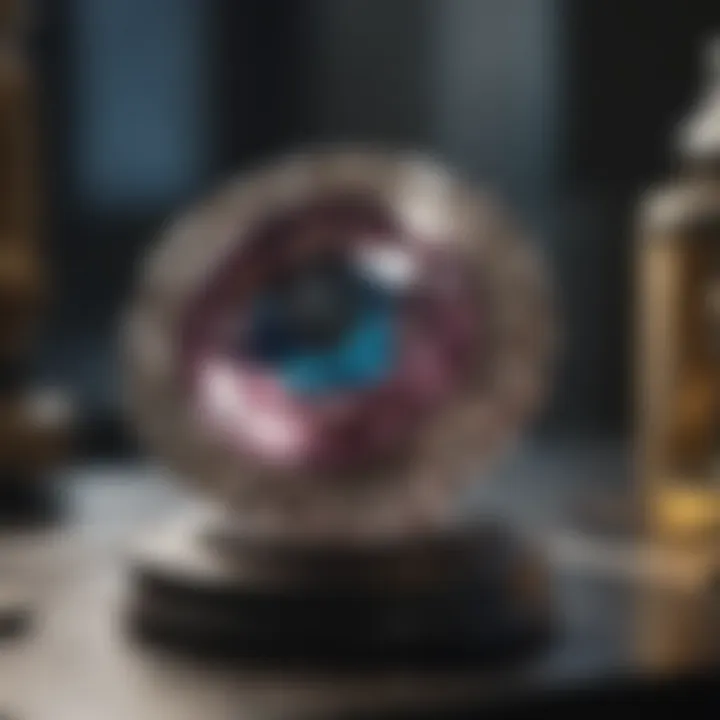
As we proceed to the next sections, the foundations laid here will be crucial. We will explore the intricate processes involved in rough gem cutting, shedding light on the tools and techniques that bring these stones from their rough, raw forms to sparkling treasures.
Process of Rough Gem Cutting
The process of rough gem cutting is the backbone of transforming a rough stone into a sparkling masterpiece ready for the market. This phase is not just about slicing away excess material; it encapsulates a blend of artistry, technical skill, and knowledge about the stone being worked on. Understanding this intricate process can significantly enhance a gemstone's value and appeal, making it a pivotal aspect of gemology.
Initial Assessment of Rough Stones
Before any cutting begins, a thorough assessment of the rough stones must take place. Every gemstone is unique, containing its own set of characteristics. Gem cutters analyze the size, shape, inclusions, and color of each stone. It’s crucial to identify the best way to maximize the gem's potential while minimizing wastage. A keen eye can perceive the hidden beauty within the rough and decide the most effective cutting strategy.
This initial evaluation can dictate every subsequent step and significantly influence the final product. Thus, it’s often said that a successful cut begins long before the blade touches the stone.
Designing the Cut
Once the assessment is complete, the next logical step is designing the cut. This involves conceptualizing how best to shape the stone. Cut design incorporates angles, symmetry, and light reflection. A well-designed cut will enhance the gem’s visual attributes, maximizing brilliance. The cutter must balance the art of aesthetics with practical aspects like preserving stone integrity and avoiding fractures.
The consultation with clients may also play a role at this stage, as specific preferences may guide the design. Defining this framework sets the stage for the intricate work ahead.
Cutting Techniques
Cutting techniques are the heart of the rough gem cutting process. Each method brings out distinct characteristics of the gemstone, influencing its final appearance and value. Below are some notable techniques:
Facet Cutting
Facet cutting is the most popular method among gem cutters. This technique involves creating flat surfaces or facets on a gemstone. The key characteristic of facet cutting is its ability to enhance the light return, bestowing gems like diamonds an exceptional sparkle.
One unique feature of facet cutting is how it utilizes precise angles to create mesmerizing light patterns. It is particularly beneficial for transparent stones, as it can maximize their brilliance and clarity. However, facet cutting requires a high level of skill, and improperly executed cuts can diminish the gemstone's value and visual appeal.
Cabochon Cutting
Cabochon cutting is a technique that differs significantly from facet cutting. Rather than creating flat facets, this method results in a smooth, rounded surface. The key characteristic of cabochon cutting lies in its display of the stone’s color and patterns, making it ideal for opaque or translucent stones like opals and turquoise.
A remarkable aspect of cabochon cutting is its ability to showcase the gemstone’s natural beauty without the complications of maximizing light return. While it may require less precision than facet cutting, achieving a flawless finish remains crucial for aesthetic appeal.
Slicing and Dicing
Slicing and dicing are techniques less common but equally valuable in specialty gem cutting. These methods allow for the thin slicing of gemstones into layers or smaller pieces, which can be used for cabochons or other decorative forms. The primary benefit of this approach is that it maximizes material use and provides unique ways to showcase the gemstone.
A distinct feature of slicing and dicing is that it offers an opportunity for creativity beyond traditional forms. However, these techniques also present challenges, such as increased chances of compromising the stone’s stability. Therefore, it requires a meticulous approach to avoid loss and ensure that the final product remains intact.
Polishing and Finishing
After the cutting is done, polishing and finishing follow. This stage is essential in attaining that final shine and luster. It involves refining surfaces, removing any rough edges, and enhancing the gem’s overall appearance. Polishing is what truly brings out the clarity and beauty of the gemstone, transforming it from a mere piece of cut stone into a dazzling, lustrous jewel ready for market or display.
In summary, the process of rough gem cutting is a delicate dance of art and science that seeks to preserve the natural beauty of the gemstone while enhancing its attributes. Each phase—from assessment to polishing—is integral to the final product’s quality.
Tools and Equipment Used in Gem Cutting
When it comes to rough gem cutting, the right tools and equipment are paramount. The craftsmanship involved in turning a raw gemstone into a dazzling jewel can't happen without these essential implements. Each tool serves a specific purpose and contributes to the overall quality of the cut stone. Understanding the nuances of these tools helps both hobbyists and professionals appreciate the depth of skill involved in gem cutting.
Essential Cutting Tools
Diamond Saws
Diamond saws are fundamental in the gem cutting process. These specialized saws are equipped with diamond blades which can slice through tough materials with ease. What makes diamond saws stand out is their durability; unlike regular saw blades, these can endure the hardness of various gemstones. Their precision cutting ability minimizes the risk of chips or cracks, making them an ideal choice for cutting rough stones.
One unique feature of diamond saws is their ability to produce smooth edges, which is crucial when preparing stones for further shaping. The only downside might be the cost, as diamond saws can be pricier than their traditional counterparts. However, the investment often pays off in the long run, especially when considering the quality of the cut stones.
Faceting Machines
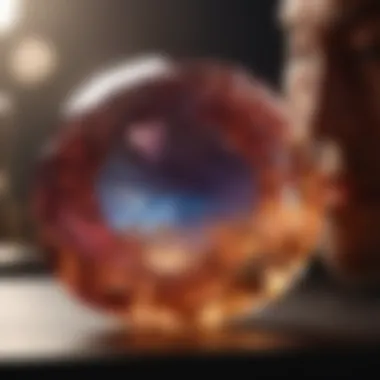
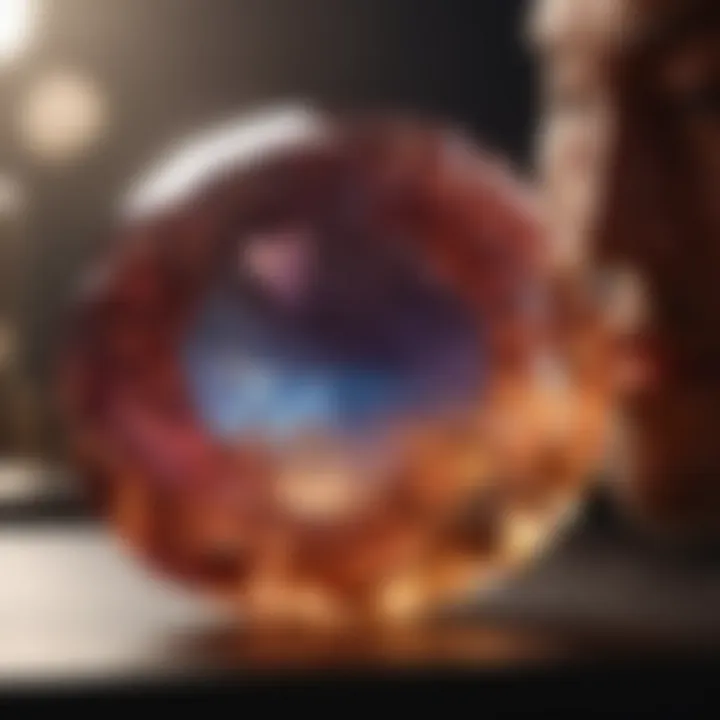
Faceting machines transform rough stones into sparkling gems with intricate facets. The key characteristic of these machines is their ability to maintain precise angles and alignments, which is essential for creating a high-quality finish. They come in various forms, from simple, manual setups to advanced automated systems.
One unique advantage of faceting machines is the speed they bring to the cutting process. Professional gem cutters rely on them to save time while ensuring accuracy. However, the learning curve can be steep for beginners. Mastering the settings and using them effectively can take some practice, but the results, once achieved, are well worth the effort.
Polishing Wheels
Polishing wheels are the final touch in the gem cutting process. They are crucial for giving the finished stone its luster and shine. What’s significant about polishing wheels is the variety of materials they can be made from, ranging from leather to fabric, each offering different finishes.
The unique feature of polishing wheels lies in their ability to refine the surface, removing any minor scratches left from previous cutting processes. They also enhance the stone’s color and overall appearance. One thing to note, however, is that using polishing wheels improperly can lead to over-polishing, which might diminish the stone's desired qualities. Hence, expertise in their use is essential to capitalize on their benefits.
Technological Advancements
Advancements in technology have revolutionized the gem cutting industry. In this section, we explore how modern techniques have enhanced traditional methods and improved the quality of gemstone cutting.
Laser Cutting
Laser cutting has taken gem cutting to a whole new level. This technique employs focused beams of light to precisely cut gemstones, allowing for incredibly intricate designs. Its key benefits include extremely high accuracy and minimal waste of material, which are significant advantages over older methods.
One particular aspect of laser cutting that stands out is the ability to achieve complex shapes that are not feasible with traditional saws or machines. However, the cost of laser equipment can be a barrier for smaller operations. Still, many believe the investment is justified due to the precision and quality it brings to the final product.
CAD in Gem Design
Computer-Aided Design (CAD) in gem design has made a significant impact on the way gemstones are conceptualized. With software designed specifically for gemmology, visualizing the end product has never been easier. A key characteristic of CAD is its capacity to allow designers to create detailed models and make adjustments on the fly.
One unique feature of CAD is the simulation of how light interacts with the proposed cuts, providing insights that were previously hard to come by. The downside? There can be a considerable learning curve associated with CAD design, and initial setup costs could be high. Nonetheless, the ability to create precise models and plans pays off in terms of cutting accuracy, ultimately leading to higher-quality gemstones.
"Investing in the right tools and technology is as crucial as mastering the craft itself—without them, the journey from the rough stone to the finished gem is fraught with challenges".
Skills and Expertise in Gem Cutting
The art of gem cutting transcends mere technical know-how; it embodies a blend of patience, precision, and artistic flair. In this section, the focus will be on the critical role skills and expertise play in transforming rough gems into stunning, wearable art. It’s not just about the tools, or algorithms; it demands a deep understanding of the materials and an eye for what makes each stone unique. With proper expertise, a gem cutter can unlock hidden beauty, enhancing not only the stone's appearance but also its market value.
Importance of Training and Experience
Training is the bedrock upon which gem cutting skills are built. Those aspiring to become expert gem cutters often start with formal education, heavily relying on hands-on apprenticeships under the guidance of seasoned professionals. This form of learning is invaluable, as it allows one to observe intricate techniques in real-time, tuning one’s instincts to navigate the most delicate of cuts. Without this training, many may struggle to achieve the precision needed for optimal results.
Additionally, the experience gained over time adds a layer of intuition. Knowing when to apply pressure, how to approach varying stone types, and recognizing subtle flaws are learned through countless hours at a workbench. Like a seasoned chef knowing just when to season, an experienced gem cutter develops a touch that is both gentle yet assertive.
“A good gem cutter doesn’t just follow a plan; they make decisions in the moment, inspired by the stone itself.”
Factors such as stone hardness, clarity, and even inclusions influence how a gem should be cut. Those skilled in this craft understand these variables, recognizing how to maximize the stone's natural allure.
- Formal training usually includes:
- Experience contributes to:
- Courses in gemology
- Workshops for hands-on practice
- Learning software for design and layout
- Enhanced visual judgment
- Ability to troubleshoot problems
- Efficiency in procedures, cutting down time spent on each gem
Through this combination of training and experience, a gem cutter evolves from a novice to a seasoned professional, fully equipped to address the unique challenges posed by each individual gem.
Assessing a Cutter's Craftsmanship
Evaluating the craftsmanship of a gem cutter involves a multifaceted look at various aspects of their work. Quality craftsmanship is not a one-size-fits-all; it can vary greatly between cutters, and some may specialize in different types of stones or styles. When assessing a cutter's work, one should consider elements like:
- Precision of Cuts: Sharp, accurate cuts can enhance a stone's overall appearance and brilliance. Blunt or uneven cuts can detract from its potential and value.
- Polish Quality: A well-polished gem reflects light in captivating ways, while poor polishing can leave a gem looking lackluster.
- Creativity: An exceptional cutter doesn’t just follow traditional patterns; they think outside the box, bringing forth creative designs that highlight the stone’s unique characteristics.
- Technical Skill: Understanding how various factors such as angle, depth, and symmetry can affect light dispersion is crucial. This knowledge can be the difference between a mediocre piece and a stunning conversation starter.
In the age of technological advancement, assessing craftsmanship may also include reviewing a cutter's use of modern tools and techniques. For instance, the combination of traditional methods with advanced technology can result in enhanced precision and efficiency.
Ultimately, a gem cutter’s craftsmanship can significantly impact the final product. Consumer expectations are ever-increasing; a deep understanding and skilled execution ensures satisfaction both aesthetically and financially.
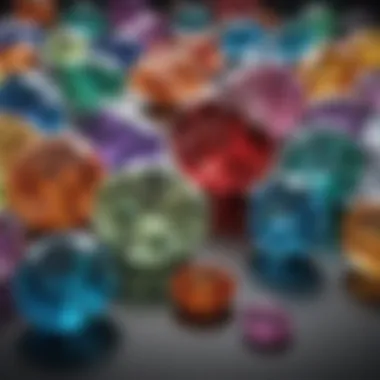
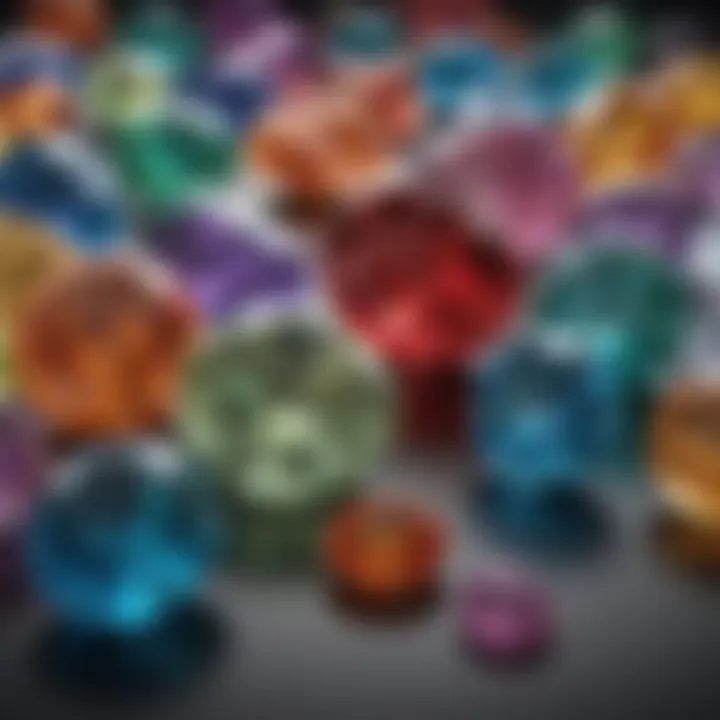
Through a comprehensive evaluation of these traits, one can gauge the true expertise of a gem cutter, thereby making informed decisions when selecting a professional for gem cutting services.
Ethical Considerations in Gem Cutting
The gemstone industry has often been fraught with ethical dilemmas, and as such, ethical considerations in gem cutting have become increasingly significant. The way gemstones are sourced, cut, and sold not only impacts their perceived value but also their broader implications on sustainability and social responsibility. Addressing these concerns does not only nourish the ethical compass of the industry; it also meets the growing demand from consumers for transparency and accountability. This section will delve into two critical aspects of ethical considerations in gem cutting: sourcing and sustainability as well as the impact of ethical practices.
Sourcing and Sustainability
When discussing the sourcing of gemstones, it's essential to look beyond just the aesthetics. The journey begins long before the cutter gets their hands on the raw materials. In many cases, gems are mined in regions with questionable labor practices, often exploiting local workers and harming the environment. Consequently, sustainability in sourcing has become a buzzword in the industry.
- Transparency: Consumers are gradually waking up to the importance of knowing where their gemstones come from. Ethical sourcing means establishing clear supply chains, ensuring traceability from mine to market.
- Fair Trade Practices: Incorporating fair trade practices helps ensure that miners receive a livable wage and that their working conditions are safe and humane
- Environmental Impact: Sustainable sourcing aims to minimize the ecological footprint of mining. Companies are now encouraged to use methods that don't degrade natural habitats or cause erosion.
Incorporating these principles into the cutting services not only enhances the reputation of the gemstone but also fosters a sense of community and respect for the industry.
Impact of Ethical Practices
The impact of ethical practices in gem cutting extends beyond moral imperatives; it has tangible effects on the market and the perception of gemstones. Ethical practices can significantly improve the brand image of jewelers and cutters alike, which in turn influences consumer preferences and purchasing decisions.
- Value Enhancement: Ethically sourced and cut gemstones typically attract higher prices. Buyers are wary of purchasing stones that could be linked to conflict or unethical labor, leading them to favor those with transparent practices.
- Consumer Trust: Building trust with customers is vital. Brands that embrace ethical responsibilities tend to earn loyal clienteles, as consumers often gravitate towards brands that align with their values.
- Long-term Industry Health: By ensuring ethical practices throughout the cutting process, the industry can promote long-term sustainability. This could potentially mitigate the risk of synthetic alternatives, as buyers remain committed to ethically sourced natural gemstones.
"Gems are not just pretty rocks; they carry the stories of the people and places behind them. Ethical considerations make those stories worth telling."
Overall, embracing ethical practices not only nurtures the gemstones themselves but enhances the entire ecosystem of the gem industry. As more stakeholders commit to these principles, the potential for sustainability and fair practices grows, leading to a healthier relationship between gemstones, their sources, and their consumers.
Value Addition Through Cutting Services
In the competitive sphere of the gemstone industry, the role of cutting services cannot be overstated. Rough gems, as they emerge from their natural environments, often possess an unpolished, raw beauty. However, the journey from rough stone to sparkling gemstone is where the true value is added. The skills of a cutter transform these rough gems into pieces that not only catch the light beautifully but also tell a story.
Enhancing Aesthetic Appeal
When it comes to enhancing aesthetic appeal, gem cutting acts almost like an artist’s brush strokes on a canvas. A well-executed cut reveals the inner brilliance of a stone, showcasing its unique colors and patterns. Each gemstone holds potential beauty, but it takes an expert hand to unlock that potential. For instance, consider a rough amethyst crystal that, when appropriately cut, can display vibrant purples and remarkable clarity. This transformation is not merely about aesthetics; it's about making the stone more desirable to potential buyers.
Some factors that contribute to aesthetic improvement include:
- Shape and Style: Different cuts influence the overall look of a gemstone. A round brilliant cut, for example, maximizes the sparkle and shimmering effect due to its intricate facet arrangement.
- Color Optimization: Certain techniques can enhance a stone's natural color. For instance, modifying the depth of a cut can shift a rock’s hue into more favorable spectrums, ensuring it stands out.
- Light Interaction: Expert cutters understand how light interacts with minerals. They aim to create designs that reflect and refract light, turning ordinary stones into spectacular visual wonders.
Market Dynamics and Pricing
The intricate dance of supply and demand significantly influences market dynamics and pricing within the gem industry. As the polish of a gem reveals its beauty, so too does the demand for expertly cut stones reflect their worth in the marketplace. The cost of a gemstone is not solely determined by its size or clarity; cutting quality plays a pivotal role. Gems that have been cut exceptionally well often command higher prices due to their enhanced visual appeal and structural integrity.
Key factors affecting market dynamics and pricing include:
- Quality of Cutting: Simply put, a poorly cut gem will reduce its value, even if the rough stone was initially high quality. Optimal angles, precise measurements, and superior finish can add significant value.
- Trends in Consumer Preferences: Market prices can leap or dive depending on what styles are in vogue. For instance, the resurgence of interest in vintage cuts could see prices for antique stones soar.
- Supply Chain Considerations: Ethical sourcing and the sustainability of the gems can also impact pricing. Consumers are increasingly aware of where their gems come from, and this consciousness can elevate the market value of ethically sourced stones.
Understanding these economic factors is essential for collectors and designers hoping to navigate the gemstone market successfully. As the old adage goes, "you get what you pay for," and in the realm of gemstones, that rings especially true.
"A stone is only as valuable as the vision behind it.”
Epilogue: The Role of Cutting Services in Gemology
Cutting services play a pivotal role in the world of gemology, serving as the bridge between raw, unrefined stones and the sparkling jewels that captivate collectors and consumers alike. A well-executed cut can transform an unsightly rough gem into a dazzling masterpiece, showcasing its inherent beauty while maximizing its value. This intricate process is not just about skill; it encompasses a deep understanding of the gemstone's characteristics, including clarity, color, and potential for brilliance.
One vital aspect to consider is the impact that cutting has on the overall quality of a gemstone. Each stone, whether it be a striking amethyst or a rare diamond, possesses unique features that dictate how it should be cut. A simple miscalculation during the cutting phase can diminish a stone's appeal significantly. Therefore, expert gem cutters regard each rough gem as a blank canvas, on which they must carve out not only the shape but also the essence of the stone itself.
"The right cut is like a key to the heart of the stone; it unlocks the beauty hidden within."
When it comes to value, the art of cutting has profound implications. The gemstone market is competitive, with buyers often willing to pay premium prices for stones that are skillfully cut. High-quality cuts tend to reflect light beautifully, which in turn enhances the gemstone's color and clarity. This is essential in a marketplace where customers are increasingly discerning and knowledgable.
Key Benefits of Cutting Services in Gemology
- Enhancement of Aesthetic Qualities: A skilled cutter can elevate the visual appeal of a stone, transforming it from a basic rock into a stunning accessory.
- Maximization of Market Value: Properly cut stones fetch higher prices, making the initial investment in cutting services worthwhile for both jewelers and collectors.
- Preservation of Gemstone Characteristics: The cutting process allows for the retention of a stone's best features, ensuring that its unique qualities are highlighted rather than hidden.
Considerations About Cutting Services
While cutting services offer many benefits, it’s also crucial to understand the potential drawbacks. Poor cutting can lead to waste of material and can render a gem less valuable. This underscores the importance of selecting experienced and reputable cutting services. Additionally, gem enthusiasts should be aware of the ethical sourcing of stones; after all, the true value of gemology is not purely in beauty or monetary worth but also in the ethical practices that underpin the stones' journey from earth to adornment.
In summary, cutting services stand as a cornerstone of gemology, bridging the divide between raw potential and refined beauty. For gemstone enthusiasts, collectors, and jewelry designers, understanding the role and significance of these services is fundamental. The quality of a cut not only defines the stone's aesthetic appeal but also influences its market value and ethical implications, making it an area worthy of careful consideration.



